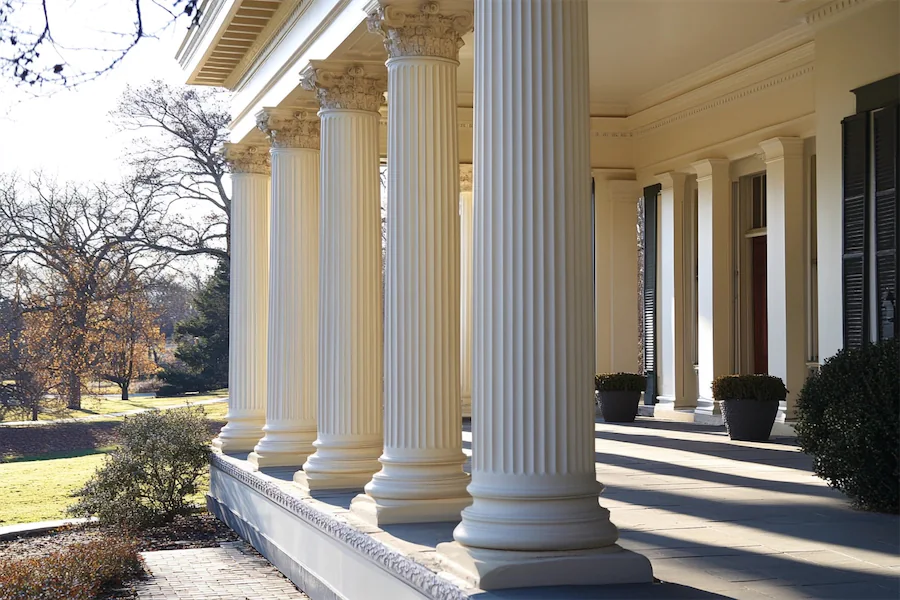Greek Revival architecture, which flourished in the United States and Europe during the late 18th and early 19th centuries, is renowned for its adoption of ancient Greek design elements, particularly the use of prominent columns.
Introduction to Greek Revival Columns
In Greek Revival architecture, columns are central features that emulate the grandeur of ancient Greek temples. They are typically positioned at the front of buildings, supporting porticos or porches, and are instrumental in conveying the style’s characteristic symmetry and formality.
History and Origins of Greek Revival Columns
The Greek Revival movement emerged as architects and builders sought to express democratic ideals and cultural identity by drawing inspiration from ancient Greece. This architectural style became particularly popular in the United States during the first half of the 19th century, symbolizing the young nation’s aspirations and values.
Key Features of Greek Revival Columns
Greek Revival columns are distinguished by several key characteristics:
- Classical Orders: The columns adhere to the classical Greek orders—Doric, Ionic, and Corinthian. The Doric order, known for its simplicity and strength, is characterized by plain capitals and fluted shafts. The Ionic order features scrolled volutes on its capitals, while the Corinthian order is the most ornate, with capitals adorned with acanthus leaves.
- Materials: In the United States, Greek Revival columns were often constructed from wood or stucco and painted white to mimic the marble of ancient Greek temples. This choice of materials made the style more accessible and adaptable to various building types, from grand public edifices to modest residences.
- Proportions and Scale: The columns are typically tall and robust, creating a commanding presence. They are proportioned to reflect the ideals of symmetry and balance inherent in classical architecture, often supporting a pedimented gable reminiscent of a Greek temple facade.
Applications of Greek Revival Columns
In Greek Revival architecture, columns serve both structural and symbolic purposes:
- Public Buildings: Columns are prominently featured in courthouses, banks, and educational institutions, symbolizing ideals such as democracy, stability, and knowledge. The imposing colonnades convey a sense of authority and permanence.
- Residential Structures: In homes, columns often support entry porches or full-width verandas, adding elegance and formality. Even modest houses incorporated columned porticos to align with the popular style, reflecting the widespread appeal of Greek Revival aesthetics.
Considerations When Choosing Greek Revival Columns
When selecting or designing Greek Revival columns, several factors should be considered:
- Authenticity: Adhering to the proportions and details of the classical orders ensures the columns contribute to an authentic Greek Revival appearance. This includes appropriate entasis (a slight swelling of the column shaft) and correct capital design.
- Material Selection: While traditional materials included wood and stucco, modern interpretations might utilize more durable materials such as fiberglass or composite materials that replicate the appearance of painted wood or stone while requiring less maintenance.
- Contextual Compatibility: The scale and design of the columns should harmonize with the building’s overall proportions and the surrounding environment, ensuring that the structure maintains architectural coherence and respects local historical contexts.
Conclusion
Greek Revival columns are iconic elements that encapsulate the admiration for ancient Greek architecture and its associated cultural values. Their enduring presence in architectural design underscores a timeless connection to classical ideals of beauty, democracy, and order. Whether in monumental public buildings or charming residences, these columns continue to impart a sense of dignity and grace, reflecting a rich architectural heritage that remains influential today.
